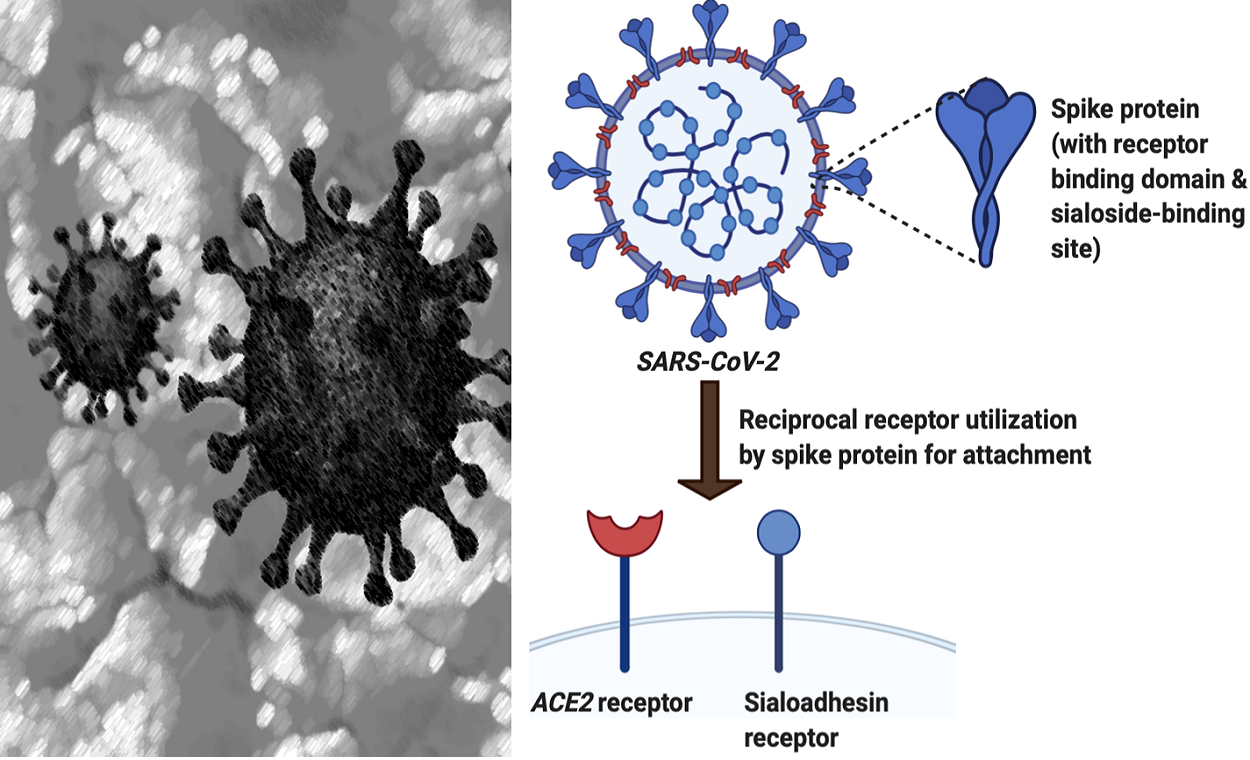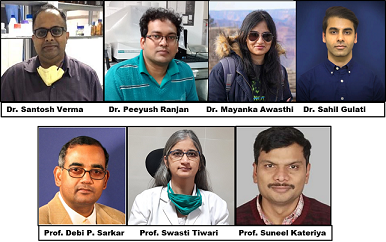
Using bioinformatics approaches reseachers identify unique stretches of inserts in the N-terminal domain (NTD) of spike-protein of SARS-CoV-2 which is missing in related human infecting beta Coronavirus SARS-CoV, but present in MERS-CoV.
DEC 08, 2020 | BY RATNESHWAR THAKUR
Coronavirus continues to cause havoc around the world as new cases of infections are being reported each day. Despite challenges, scientists are uncovering hints that may help to control the COVID-19 pandemic.
COVID-19 causing coronavirus SARS-CoV-2 utilizes its envelope spike-glycoprotein to infect the cells in our body. Studies suggests that although being identical to SARS-CoV and utilizing common host receptor human ACE-2 for cellular entry, SARS-CoV-2 is more infectious than SARS-CoV.
Working on this riddle; Dr. Santosh Verma, Sanjay Gandhi Postgraduate Institute of Medical Sciences (SGPGIMS), Lucknow, India in collaboration with groups from University of Maryland & Gatan Inc. USA, University of Delhi South Campus (UDSC) & Jawaharlal Nehru University (JNU), New Delhi identify unique stretches of inserts in the N-terminal domain (NTD) of spike-protein of SARS-CoV-2 which is missing in related human infecting beta Coronavirus SARS-CoV, but present in MERS-CoV.
Using computational biology approaches researchers identify that the SARS-CoV-2 spike-protein retains unique sialoside-binding pocket (binding-site with affinity for sugars) which structurally resembles to MERS-CoV sialoside-binding pocket. Structure-based sequence comparison of the NTD of the spike-protein of MERS-CoV, SARS-CoV, and SARS-CoV-2 illustrate three divergent loop regions in SARS-CoV-2, which is evocative of MERS-CoV sialoside binding pockets.
The results of this study have been published in the journal ‘Viruses’.
Further Dr. Verma adds, “We have tested binding potential of SARS-CoV-2 NTD pocket with different sialosides using computational biology. Comparative binding analysis with the host sialosides revealed conformational flexibility of SARS-CoV-2 divergent loop regions to accommodate diverse glycan-rich sialosides. These key differences with SARS-CoV and similarity with MERS-CoV suggest an evolutionary adaptation of SARS-CoV-2 spike glycoprotein reciprocal interaction with host surface sialosides to infect host cells with wide tissue tropism (cells/tissues of the host that support growth of a particular virus or bacterium). Thus, our observation potentiates further studies involving the functional role of SARS-CoV-2-sialoside interaction during virus-entry, tissue tropism, and in identifying novel therapeutics preventing such interaction.”
 "Glycans have been known to serve as receptors/co-receptors mediating infection in several viral diseases. Targeting the glycan recognition domain of the spike protein could constitute an innovative approach for SARS-CoV-2. However, this has to be a part of a larger antiviral strategy to prevent the early stages of infection," commented Prof. Avadhesha Surolia, SERB Distinguished Fellow, Honorary Professor at Molecular Biophysics Unit, Indian Institute of Science, Bangalore. He was not involved in this study.
"Glycans have been known to serve as receptors/co-receptors mediating infection in several viral diseases. Targeting the glycan recognition domain of the spike protein could constitute an innovative approach for SARS-CoV-2. However, this has to be a part of a larger antiviral strategy to prevent the early stages of infection," commented Prof. Avadhesha Surolia, SERB Distinguished Fellow, Honorary Professor at Molecular Biophysics Unit, Indian Institute of Science, Bangalore. He was not involved in this study.
The research team included Mayanka Awasthi, Sahil Gulati, Debi Prasad Sarkar, Swasti Tiwari, Suneel Kateriya, Peeyush Ranjan and Santosh Kumar Verma.
Journal Reference:
The Sialoside-Binding Pocket of SARS-CoV-2 Spike Glycoprotein Structurally Resembles MERS-CoV
